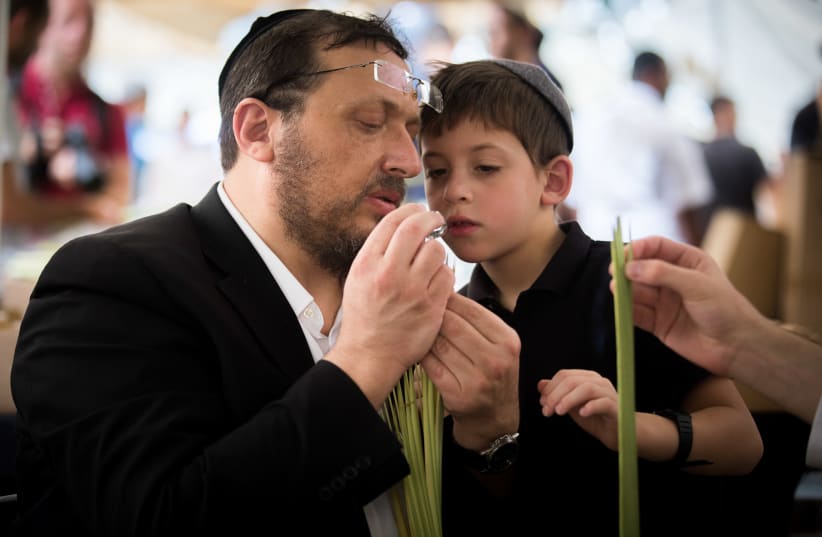Sukkot, also known as The Feast of Tabernacles, is the happiest holiday in the Jewish year. The Torah tells us three times to rejoice on Sukkot, and all over the Jewish world, the unique ambience of Sukkot is apparent: eating in the sukkah, dancing with Torah scrolls, waving the four species all infuse a sense of joy in the Jewish heart.
Sukkot comes just a few days after Yom Kippur and a short while after Rosh Hashanah. It externalizes the internal joy of the purified person, the atoned, the person celebrating the beginning of the new year with a clean heart and good will.
On the one hand, Sukkot faces the new year and the winter that brings blessings and abundance from heaven; and on the other hand, it is the Harvest Festival – the holiday that refers to the past year. In agriculture, Sukkot is when the farmer finishes putting last year’s yield into storage after a long year of working in the fields, planting and plowing and harvesting. At this moment, he expresses his joy and feelings of gratitude to God for the harvest.
The Lubavitcher Rebbe said that symbolically, even cultures that do not center on agriculture need a harvest festival. When a year has passed and we are about to embark on the following one, we reach a point when we summarize the past year, storing in our hearts the good deeds we’ve done and atoning for the less desirable ones. This internal harvest that every person with awareness experiences, ultimately leads to joy. A person who surveys the past year and comes to the new year with a pure heart, feels internal joy that motivates him to make the new year even better and more successful.
It is then that we are called upon to pick up the arba minim, the four species: the lulav, etrog, hadassim and aravot. The lulav is a branch that grows on the palm tree that also yields sweet and juicy dates. The etrog, the fruit of a citron tree, has a unique taste and a smell that carries far distances. The hadas boughs, with leaves from the myrtle tree, has an invigorating smell. And the simple arava boughs, with leaves from the willow tree, has neither taste nor smell.
The sages of the Midrash have pointed out that these four species represent four types of people: The etrog symbolizes those who study Torah and also do good deeds; the lulav symbolizes those who study Torah but are not characterized by their good deeds; the hadas symbolizes the people who do good deeds but do not invest in Torah learning; while the arava represents those people who have neither good deeds nor Torah learning.
We gather these four species together, thus expressing our aspiration for national unity among all different types of people.
This is food for thought. If there are people with no positive traits, why give them a place of honor? It’s easy to talk about unity, but we have to admit that this question is bothersome and begs an answer.
It seems that the simple arava, devoid of smell or taste, manages to express the unity and solidarity better than the others. When there is a reason for love, when a person has noticeable skills, we tend to love the skills and not focus on the person. The beautiful etrog has a taste and smell, the tall lulav comes from a tree with delicious fruit, the hadas has a pleasant smell. But the arava has no outstanding quality at all. Unity with the arava and the person it symbolizes stems from one reason only: We unite with anyone who is our brother or sister, even if they don’t offer us anything special and even if we don’t consider their personalities special.
This unique moment should be noted and treasured. This is the moment when a person surveys the past year, feels good and embraces someone who has nothing. This moment is an island of goodness and beauty in the sea of life.
May we be privileged to unite with the entire Jewish nation and rejoice with internal and real happiness.
Chag Sukkot sameach!
The writer is rabbi of the Western Wall and Holy Sites.
